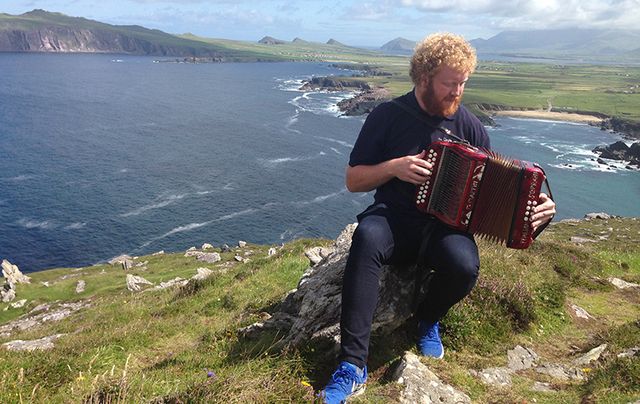Travel tips from Vagabond Tours - they make the 2,500km of coastline in the west of Ireland is their playground
The Wild Atlantic Way possesses a rugged raw beauty. Meandering along 2,500 km of stunning Irish coastline, it has become a bucket list destination for many. Lending itself perfectly to landscape photography, it also owns the title of the world’s longest defined coastal driving route.
At Vagabond Tours the Wild Atlantic Way is our playground. From horse-riding along its beaches, to sea kayaking its bays and hiking its trails, we’ve fully embraced all that it has to offer. With this in mind, we’ve compiled a list of our top 9 Wild Atlantic Way jaw-dropping sights you simply must visit. Check out all these photos - most are taken by our guests on tour!
Sliabh League Cliffs, County Donegal
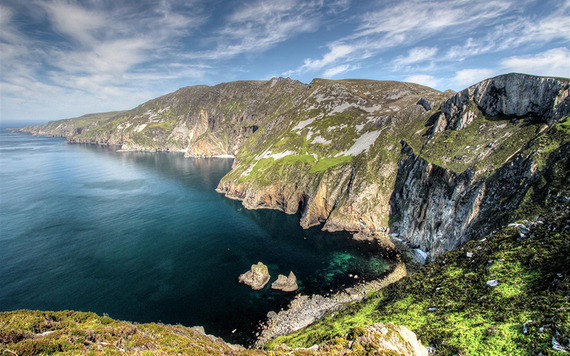
Slieve League (Cliffs) by Simon Lunn (Vagabond Guest)
Located in Donegal on the north west of Ireland. At 601 meters, the Sliabh League cliffs are among the highest in Ireland. Sloping into the ocean, the quartzite cliffs on a sunny day catch the sun perfectly. Stone slabs lead you along impressive viewing points. It is possible to venture further along the sea cliffs, though good walking shoes are a must.
Downpatrick Head, County Mayo
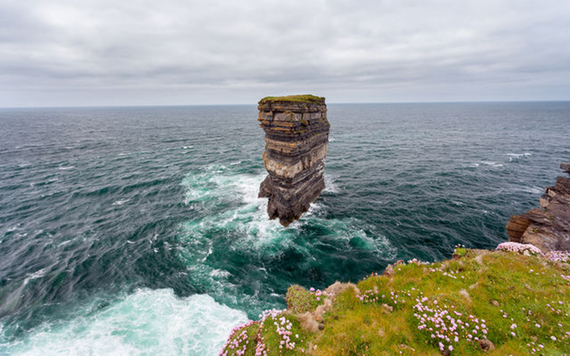
Downpatrick Head courtesy of Tourism Ireland.
Along the windswept coast of North Mayo you’ll find the rocky outcrop of Downpatrick. The weather-beaten sea stack of Dun Briste rises up from the sea just off it. Legend goes that a chieftain once lived on Dun Briste. When St Patrick failed to convert him to Christianity, St Patrick hit the ground with his crozier, splitting the sea stack from the mainland and leaving the chieftain stranded.
Dun Aengus, Inis Mór, Aran Islands
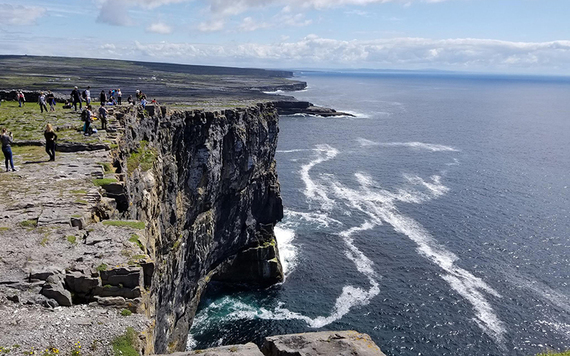
Dun Aengus, Inishmore, Aran Islands by Daniel J Ryan, Vagabond Guest
Having the appearance of been sliced in two. Exaggerated by the fact that it’s situated right on top of a cliff. Dun Aengus is the largest pre-historic fort on the Aran Islands. With no railings, you can get right up close to the edge. Best reached by either renting a bike or taking a horse and cart from Kilronan, where the ferries dock. There is a bit of a walk uphill to Dun Aengus from the interpretive center. However, the views once you reach there, make it totally worth it.
Cliffs of Moher, County Clare

Cliffs of Moher by Crystal Haffner, Vagabond Guest.
Ireland’s most popular natural attraction and attracting 1 million visitors a year. The cliffs stretch 8 km along the coast in Co. Clare. On a clear day you can see right out to the Aran Islands, Galway & Connemara. Bands of limestone combined with coastal erosion have shaped these cliffs over millennia. The interpretive center on site is excellent, and provides interesting info on the geology and history.
Doolough Valley
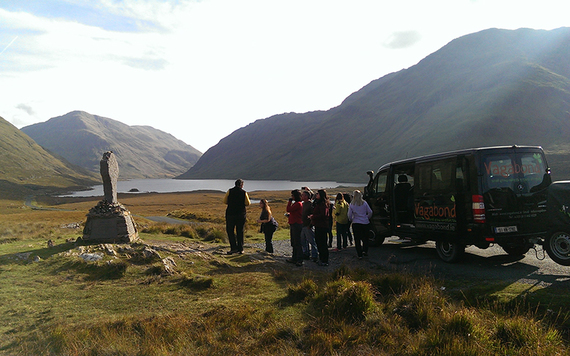
Doolough Valley in Mayo.
Journeying out from Louisburg to Leenane in south Mayo you’ll come to the serene Doolough Valley. Enclosed by the mighty Mweelrea mountain on the right and the Partry Mountains on the left. With such beauty around you, it’s hard to believe that this was the site of the infamous Doolough tragedy in 1849, where 400 people perished. A narrow winding road meanders through the valley hugging Doolough Lake. Like many places along the Wild Atlantic Way, it is best to be prepared to stop suddenly for ambling sheep!
Croagh Patrick
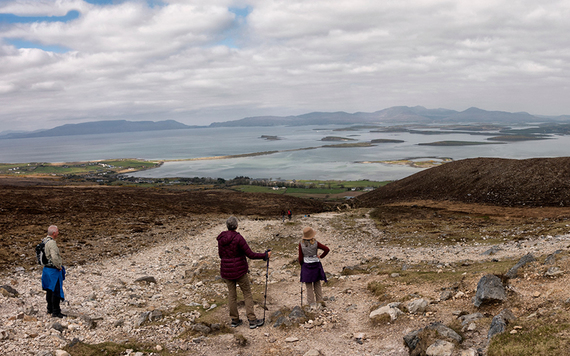
Croagh Patrick Landscape By George Taylor, Vagabond Guest.
The famous holy mountain. It has been a pilgrimage site for over 5,000 years, first used by the Pagans then adopted by the Christian and is located a couple of kilometers outside the picturesque town of Westport.
Rossbeigh, Ring of Kerry
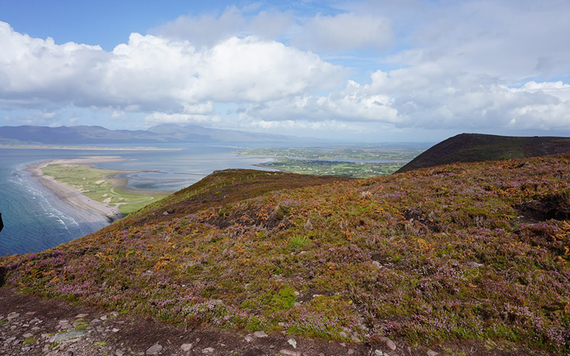
Rossbeigh, A great spot for a Vagabond Hike, by Vikki Syrov.
Rated by TripAdvisor as one of the top 10 beaches in Ireland. A long sandy beach with panoramic views of the Dingle and Iveragh Peninsula, Rossbeigh Beach doesn’t fail to impress. Although located along the busy Ring of Kerry, it still retains its peaceful demeanor. Popular with surfers, horse riders and walkers alike. It should be noted that the facilities here are quite good too, with toilet facilities, ample parking and a children’s playground.
Slea Head
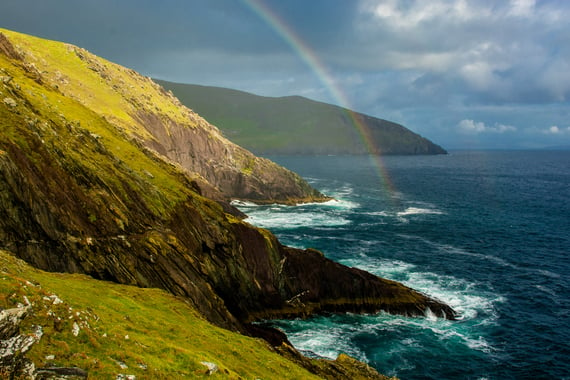
Rainbow at the coast of Slea Head.
Slea Head is situated on the tip of the Dingle Peninsula. This 50km stretch of road is best experienced by taking your time, and hopping out at scenic spots along the way. Must see spots include; the Gallarus Oratory, Dún Chaoin pier and Slea Head itself. In brief this is a great alternative to the Ring of Kerry, and not nearly as busy.
Skellig Michael
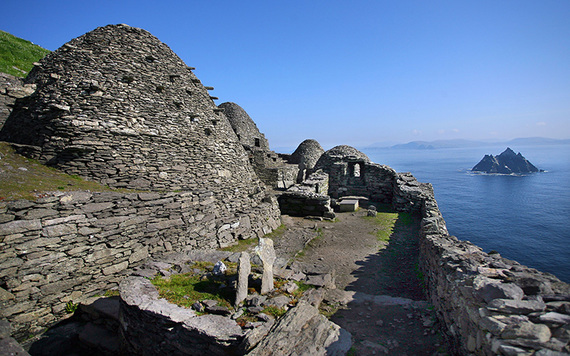
Beehive Huts on Skellig Michael, County Kerry, photo courtesy of Tourism Ireland.
As the Irish playwright George Bernard Shaw described Skellig Michael “it belongs to our dream world”. A sort of forlorn beauty, removed from civilization. Irish monks during the 8th century made it their home. On the edge of the known world at the time, a sense of being closer to God is what attracted the monks to the Skelligs. Passage to Skellig Michael can be challenging, it is best to be prepared before going. The island is located 12 km off the coast of Kerry. Their pinnacles protruding from the ocean, Beehive huts left behind offer an insight into what life was like here centuries ago. Overall Skellig Michael is truly a magical place.
If you like the idea of seeing of seeing the Wild Atlantic Way, we recommend browsing some of our tours below.
- 8 Day Wild Irish Rover Tour
- 12 Day Giant Irish Adventure Tour
Tag @VagabondIreland with your amazing photos of Ireland!
